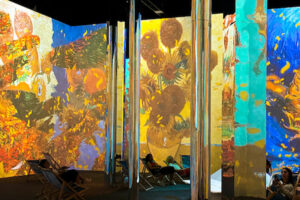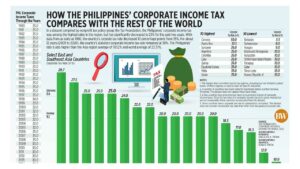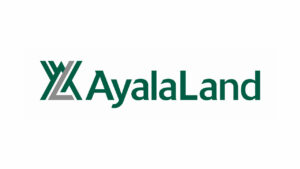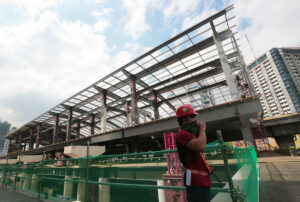The future of art: Bridging the traditional and the digital

By Brontë H. Lacsamana, Reporter
FOR a sector of society that takes inspiration from the world and channels it into creative output, the pandemic made everything seem smaller, darker, and bleaker. Movement was restricted, people stayed put, and physical spaces for sharing and showcasing art were limited.
But somehow the world also became larger. Artists did online commissions, communities formed around digital art, and institutions utilized technologies like QR codes and hybrid displays to bring art to the people.
Trickie Colayco-Lopa, one of the founders of Art Fair Philippines, reports that art collecting shifted seamlessly to online and messaging platforms in the past few years.
“With regards to commercial art activities, I think any interruptions occurred briefly, in the beginning of the lockdown, but recovered quickly once online platforms became available,” she said in an e-mail to BusinessWorld.
Art Fair Philippines, a long-standing beacon of the local art scene, tapped into that very quickly and highlighted digital art in its 2021 online edition, its own adaptation to the lockdowns which made its regular onsite fairs in a Makati carpark and park unfeasible. In 2022, the online visitors to its hybrid online-onsite exhibition were triple the number of its physical visitors.
“We discovered that we have a sizeable digital art and crypto art community here in the Philippines, impervious to any of the developments in the cryptocurrency market. These artists, not cryptocurrency investors, work with technology as their medium to make art,” Ms. Lopa said.
In the 2023 fair, ArtFairPH/Digital was cemented as an official section, putting the spotlight on digital media work that incorporates and engages with computer technology, animation, virtual or augmented reality, the metaverse, or non-fungible tokens (NFTs). “Digital artists are a strong community, and they will continue to make art,” she said.
Ricky Francisco, Fundacion Sanso gallery director and Modern and Contemporary Art Festival (MoCAF) chairman, said that the shift that the pandemic caused has ultimately paved the way for newer and younger artists. On the potential of the digital world as a breeding ground for talent, he told BusinessWorld in an interview, “The traditional art system is against newer artists. Most galleries, especially established ones, don’t give chances, but there are a lot of younger people now who are into arts.”
Hence, many galleries and festivals have chosen to adjust to the times and go where the art community is. “I think there’s a real chance here to integrate the best features of technology into our existing art systems,” said Mr. Francisco.
DIVING INTO THE TECHFundacion Sanso is looking into blockchain, a technology that uses smart contracts to verify authenticity, as a way of combating art forgery.
“If we can document all the works on the blockchain, all provenance will be preserved every time an artwork transfers ownership,” he explained.
This year’s MoCAF also welcomed artists and designers who utilize artificial intelligence (AI) tools like ChatGPT or Midjourney — within certain limits. “By feeding their artworks there, by putting in a database of their own works, they can generate new ideas and then execute one in the traditional way. In that sense, it becomes a valuable tool and I think it’s here to stay,” he said.
Without such limits, however, these controversial AI tools can become a form of plagiarism, since they draw heavily from publicly available works despite the original artists not consenting to it.
Mia Rocha-Lauchengco, a co-director of Galeria Paloma, which is holding its very first Paloma Digital Art Awards this year, agreed with Mr. Francisco’s sentiment that AI tools are a useful supplement to an artist’s work.
“For our awards, because we are aware of AI’s copyright issues, we’ll only allow artists who use AI provided that the data sets, which means the images or material fed into the tool, are also by the same artist,” she said.
The new platform, which they formed to “get digital artists out of the woodwork,” is one of their efforts to legitimize the community.
“Digital art has been here for three decades. It’s nothing new. But for the longest time, it wasn’t considered fine art because it’s usually for commercial purposes like designs and layouts. That was the way for digital artists to earn a living out of it. Now, it’s different,” said Ms. Lauchengco.
At Art Fair Philippines, Galeria Paloma was one of the galleries that put up digital art, even holding discussions to educate those curious about what exactly it is.
Georgia Rocha-Chu, one of the gallery’s co-directors, explained that they initially got into the scene when they encouraged their painter-sculptor father, Carlos Rocha, to make digital art.
“From there, we met a whole community of digital artists who are so talented. The well of talent is so deep here,” she said. “Sure, when we started carrying digital art last year, we had apprehensions. But when we’ve found that it was the right track.”
She added that 75% of collectors that come to them are first-time digital art collectors, indicating a new world in terms of art.
LET’S GET PHYSICALAll the galleries and festivals interviewed by BusinessWorld for this piece echoed the sentiment that the traditional and digital art worlds can benefit each other and the greater art market if they exist and work in conjunction.
This means that physical spaces are still a major part of the equation, especially now that regular foot traffic has returned.
Ms. Lopa of Art Fair Philippines said: “We realize how much more enjoyable it is to appreciate and peruse art live. Hence, the big comeback of our audience for 2023.”
For malls that transform their halls into exhibition spaces, displaying art was never discounted even during the pandemic.
Bonifacio Global City (BGC) Estate Association executive director Jun Galvez said that the Van Gogh Alive interactive art exhibit in 2019 was very successful. While planning for the next AI-made multi-sensory experience, COVID-19 arrived and so did the restrictions meant to control its spread, halting their plans.
“Now that we’re back to normal, we want to continue providing immersive experiences because we don’t have a lot of these kinds of shows in the Philippines. The result was overwhelming before and it proved that Filipinos are into art, especially digital art,” Mr. Galvez said. This is why the One Bonifacio High Street mall will host a similar exhibit, called “Wisdom of Da Vinci,” this August.
Geraldine “Dindin” Araneta, one of the Art Fair Philippines founders, added that new galleries, exhibitions, and fairs have either continued despite the pandemic or cropped up over the last few years.
“It indicates an active art market, and artists are occupied with production for the market,” she said in an e-mail.
Ms. Chu of Galeria Paloma maintained that the bridging of traditional and digital art is simply inevitable, what with the demand for both in full swing.
“Galleries are now more open. Collectors are also more curious. In terms of a trajectory, the only way is up,” she said.




